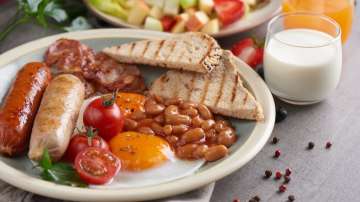Ahh, the English Breakfast! A beloved morning feast that is adored by many around the world. A hearty meal that usually includes bacon, eggs, toast, beans, and more, it's no wonder why it's so beloved. But what many people don't know is that there are some lesser-known facts about this meal that make it even more special. Here are 10 facts you may not know about the classic English Breakfast.
- The first English Breakfast was served in the 14th or 15th century. The meal was initially served at a hotel in London and has since become a popular breakfast option throughout the world.
- Some variations of the English Breakfast include fried mushrooms, tomatoes, black pudding, white pudding, and even fried bread. These additional items vary depending on regional tastes and preferences.
- The full English Breakfast is traditionally served with a cup of hot tea or coffee and a glass of orange juice. This is to provide some balance to the meal's rich flavours.
- Eggs are a key component of the English Breakfast but they can be cooked in a variety of ways. Common methods include poaching, scrambling, hard-boiled, sunny side up, and more.
- Baked beans are often served on the side of an English Breakfast but they can also be used as an ingredient within the meal itself. Baked beans are sometimes combined with eggs to create a savoury omelette or frittata.
- The English Breakfast is often enjoyed with a dollop of ketchup or brown sauce to add even more flavour to the dish.
- The traditional English Breakfast is usually served with sausages but there are also vegetarian-friendly options available which include mushrooms, vegetables, and even falafel sausages for those who prefer a meat-free version of this meal.
- The origin of the name 'English Breakfast' is unclear but one theory suggests that it was named after Queen Victoria’s husband Prince Albert who was known to enjoy a hearty breakfast every morning. At times it is referred to as British Breakfast or Fry Up.
- The full English Breakfast is believed to have originated from hardworking labourers who needed a filling meal to help them get through their long days of manual labour in the fields or mines.
- Many pubs and cafes now offer lighter versions of the full English Breakfast which includes only two or three components such as eggs, bacon, and toast for those who don't want to eat a large meal first thing in the morning or who are watching their waistline!
So there you have it - 10 lesser-known facts about this beloved morning feast! From its beginnings in London during the 14th or 15th century to its vegetarian-friendly variations today, the English Breakfast remains an important part of British culture and tradition that everyone should experience at least once in their lifetime.

